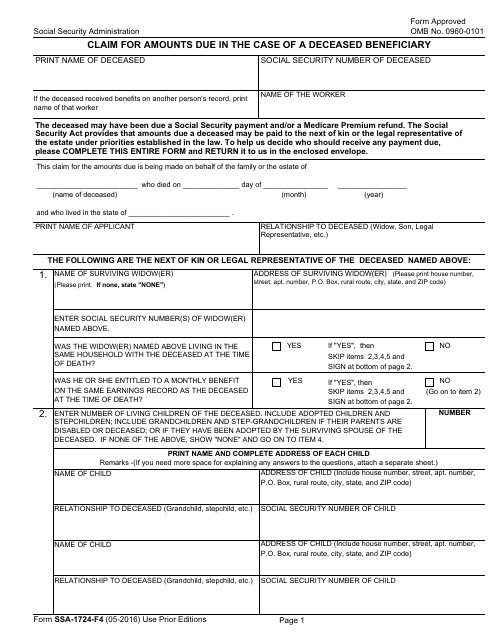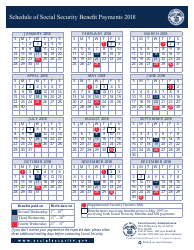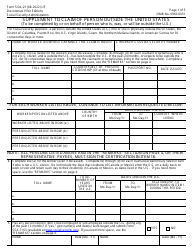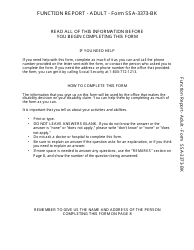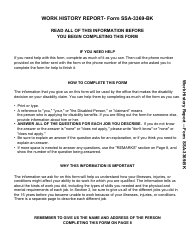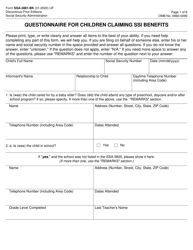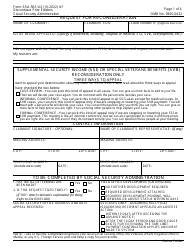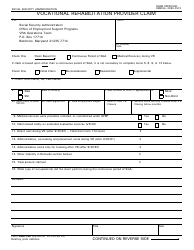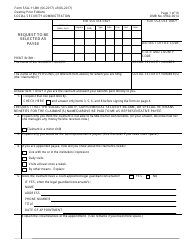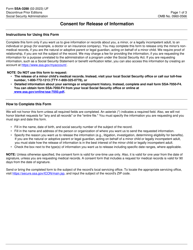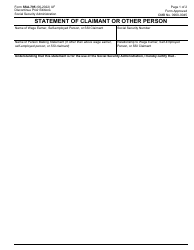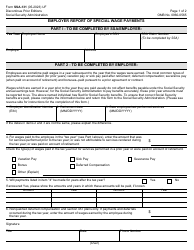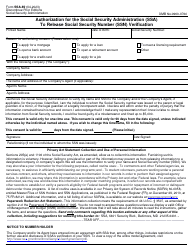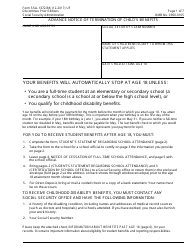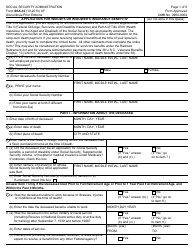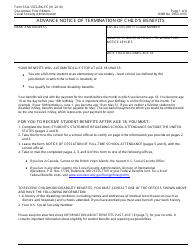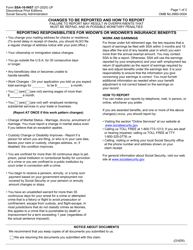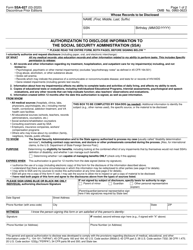Form SSA-1724-F4 Claim for Amounts Due in the Case of a Deceased Beneficiary
What Is Form SSA-1724?
Form SSA-1724-F4, Claim for Amounts Due in Case of a Deceased Beneficiary , is a form used for claiming Social Security payments or Medicare Premium refund that a deceased beneficiary may have been due prior or at the time of death.
Alternate Names:
- Form SSA-1724;
- SSA Form 1724;
- Social Security Deceased Beneficiary Form.
The form was released by the U.S. Social Security Administration (SSA) on May 1, 2016 , with all previous editions still in use. An SSA-1724 fillable form is available for download and digital filing below.
The person who claims payments should be a beneficiary's relative or legal representative of the estate. The SSA uses the information provided in this document to determine if the claimant is eligible to receive the Social Security payments. If you claim these benefits as a legal representative of the deceased person, attach a letter of appointment to your Form SSA-1724.
Why Did I Receive Form SSA-1724-F4?
If the SSA has some amount due to the beneficiary who is already deceased, they may pay the funds to the closest of kin or a legal representative of the beneficiary's estate. In this case, the SSA will send you the Form SSA-1724-F4 informing about the situation and asking to complete and submit the document to determine whether you or the person you know are eligible to receive the SSA benefits due to the deceased individual. The benefits may be paid in the following order:
- A surviving spouse that lived with the deceased at the time of death or was entitled to receive a monthly benefit on the same record.
- Children who were entitled to a monthly payment on the same record for the month of death.
- Parents who were entitled to receive a monthly benefit on the same record for the month of death.
- A surviving spouse who does not fit the abovementioned criteria.
- Children that do not meet the abovementioned requirement.
- Parents that do not qualify under Item 3.
- A legal representative of the estate.
Medicare Premium refunds are provided to the individuals or organizations who paid the beneficiary's premiums. If the beneficiary was the person who paid the premiums, the refunds are paid to a family member or a legal representative of the estate. In this case, the order of entitlement changes and the legal representative of the deceased person's estate becomes the first person eligible for Medicare Premium refunds.
How to Fill Out Form SSA-1724-F4?
Fill out the form only if it shows a valid Office of Management and Budget control number. Providing the requested information is voluntary. However, if you fail to furnish the information you are asked about or provide incomplete data it may result in loss of your payments. Form SSA-1724 instructions are as follows:
- Indicate the name and Social Security Number (SSN) of the deceased individual.
- If the deceased received Social Security benefits on the record of another person, provide the name of that person.
- Specify the deceased beneficiary's date of death and state of residence.
- Provide your name and your relationship to the deceased.
- Enter the name, mailing address, and SSN of the surviving spouse (if applicable).
- Specify if the surviving spouse was living in the same household as the deceased and was entitled to a monthly benefit on the same earnings record. If you answered "Yes" to any of these questions, skip all the rest and sign the document at the bottom of page 2.
- List all of the beneficiary's children, including any adopted children, stepchildren, and grandchildren.
- Indicate the names, SSN, and full mailing addresses of each child, as well as their relation to the deceased beneficiary. Attach a separate sheet to Form SSA-1724-F4 if you require more space.
- If any of the children has a different name from that given at birth, provide the following information on a separate sheet: the current name of the child, the name given at birth, and explanation for the difference.
- Specify the number of living parents of the deceased beneficiary, including stepparents and adopting parents. If there are no living parents, enter "None" and move to Item 5. Otherwise, enter the name, SSN, and full mailing address of each parent.
- If no relatives are indicated in Items 1, 2, or 4, provide the name and address of the legal representative of the deceased beneficiary's estate in Item 5. Otherwise, skip this part. If you submit this form as the legal representative of the estate, attach the certified copy of your letter of appointment.
- Sign the document, provide your first name, middle initial, and last name. Indicate your contact information. Provide account information (including the type of the account and routing number).
Where to Send Form SSA-1724-F4?
If Form SSA-1724-F4 was mailed to you, place your completed document in the enclosed envelope and mail it back to the sender. Otherwise, bring the form or mail the form to the nearest SSA office: addresses can be found on the SSA website.
